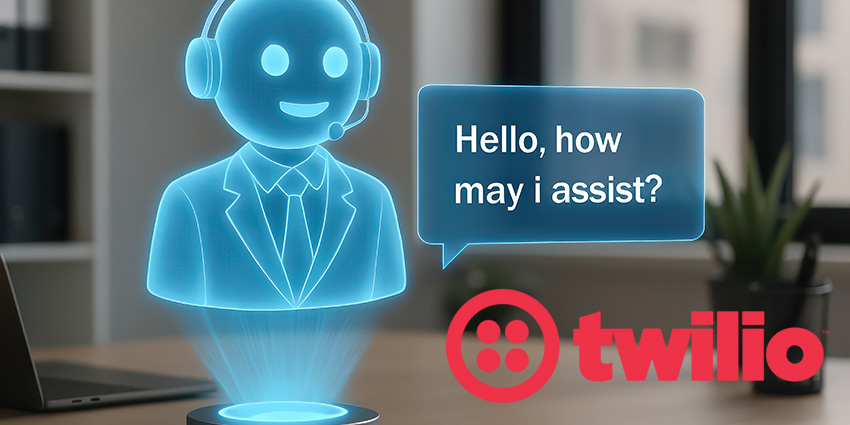For years, contact centers have been measured by metrics like average handle time or cost per contact. They show activity, but they don’t show outcomes. What really matters to a business is whether a customer’s issue is resolved, how often they need to come back, and what that means for loyalty and revenue. That’s where cost per resolution comes in.
Boards and CFOs are already asking for more. A recent Salesforce survey found that 61% of CFOs see AI agents as critical for competitiveness, and 74% expect them to deliver both savings and growth. That’s why concepts like cost per resolution are gaining ground.
Legacy CX metrics don’t capture all the dimensions. They miss the costs of recontact, the revenue lost through refund leakage, and the value of risk avoided. The next wave of Agentic AI ROI needs to measure all of that, alongside the Digital Labor TCO that leaders use to compare AI agents with human FTEs.
The Limitations of Traditional ROI Metrics
Most automation and agentic AI business cases still lean on familiar numbers: average handle time, cost per contact, or headcount savings. Those measures show efficiency, but they don’t show outcomes.
They leave out whether a customer’s problem was solved, whether loyalty improved, or whether churn dropped. They don’t account for Risk ROI either. An AI agent that processes a refund incorrectly or mishandles sensitive data doesn’t just create an unhappy customer -it creates reputational risk and potential compliance costs.
The habit of celebrating “deflection” adds to the problem. Deflecting a call without solving the issue only guarantees the customer will come back, often more frustrated. It’s a false saving that shows up quickly in recontact rates and refund leakage.
Analysts are warning that boards are asking for more. There’s a growing need for ROI measures that cover user satisfaction, decision quality, and organizational resilience, not just efficiency.
There are real-world examples of this gap. Vonage cut its customer response time from four days to four hours, a strong efficiency gain. But the more important measure is whether those faster responses improved resolution rates and customer loyalty. Without that lens, the ROI story is incomplete.
From Cost-Per-Contact to Cost-Per-Resolution: The Crucial Shift
Forget metrics based on the number of calls handled or agents saved. What really matters is whether a customer’s issue gets resolved, and how much it costs to do that. That’s the power of Cost per resolution (CPR): take every expense tied to resolution, agents, tools, tech, overhead – and divide it by the number of issues successfully closed. That gives a business meaningful insight into actual outcomes.
Why this matters so much now:
- Customers value having problems fixed, not just conversations logged.
- CFOs are watching metrics like re‑contact rates, refund leakage, and overall time‑to‑resolution. Those measures expose the real cost of chasing the same issue over and over.
- It unlocks smarter benchmarking and sharper ROI models, far beyond top‑line cost-per-contact comparisons.
Take the move some vendors are making toward resolution-based pricing. Companies like Ada are now charging for each resolved issue rather than every conversation, aligning incentives with the outcome businesses care about most
A public-sector proof point adds real weight. Barking & Dagenham Council saw their cost per enquiry drop from £4.60 to just 5p, reaching 533% ROI in six months, thanks to AI assistance that resolved most queries upfront. Beyond the direct savings, customer satisfaction surged, pushing the value narrative further.
It’s a simple truth: volume of conversation doesn’t equal resolution. One resolved interaction is worth far more than five half-handled ones. Cost per resolution aligns metrics with customer outcomes, and it’s the backbone of any credible Agentic AI ROI model.
Beyond Cost Per Resolution: The Scorecard for Agentic AI ROI
Cost per resolution is a crucial focus point for the new Agentic AI ROI scorecard, but it’s only one part of the puzzle. Here’s how to build a framework that CFOs and COOs would actually value, one that measures real business outcomes, manages AI risk, and proves why automation pays.
Step 1: Calculate Total Cost of Ownership (TCO)
Start by comparing digital labor TCO with human FTE costs. The cost equation includes more than you might think:
- Licensing fees, integration work, and LLM/token usage
- Tooling for orchestration, governance, and observability
- Security, compliance, and ongoing oversight
Those numbers give you a CFO-ready comparison: how automation stacks up against hiring, in both cost and control.
Step 2: Identify Tangible Benefits
Every ROI model needs clear financial impact signals:
- Fewer recontacts. That means less handling and smoother operations.
- Less refund leakage through first-time resolution.
- Faster time-to-resolution, which improves customer satisfaction.
Two examples show this in action:
- Zota used Agentforce to lift resolution rates noticeably, showing that faster doesn’t just mean cheaper, but better.
- NiCE and PSCU automated 71,000 financial transactions a year, delivering clear productivity gains.
Step 3: Include Intangible Benefits
There’s a growing case for measuring less tangible returns too:
- Avoided compliance violations. GDPR can carry fines of up to 4% of global turnover or €20 million, whichever is higher.
- Brand trust. Audit trails and observability show customers and boards that AI behavior is transparent.
- Organizational resilience. ROI should include decision-making speed and agility in a crisis.
- Employee value. Bots handling repetitive tasks mean higher job satisfaction and lower turnover.
These benefits don’t sit on the P&L, but they matter at the board level, particularly when combined with insights into metrics like cost per resolution.
Step 4: Embed Feedback Loops
Without data, there’s no optimization.
- Use observability dashboards like Salesforce Command Center and Scorebuddy to track agentic performance in real time.
- Run regular audits, using ROI calculators like Salesforce’s to validate your assumptions.
- Maintain control groups to measure true gains and risk exposure.
Also, ask for direct feedback from both employees and customers. How is agentic AI improving their experience, and where is it creating friction points?
Step 5: Remember the Governance and Observability Angle
Every conversation about automation eventually comes back to risk. When AI makes the wrong decision, the cost isn’t just operational; it can trigger compliance fines or cause serious damage to brand reputation. For finance and service leaders, that makes governance and observability non-negotiable.
The EU AI Act has raised the stakes. It requires organizations to show why AI systems made the choices they did, and to prove they are fair, safe, and explainable. That means audit trails, transparency logs, and clear escalation paths need to be part of every Agentic AI ROI calculation.
The business case is straightforward. A system that resolves tickets but cannot explain its decisions exposes the company to hidden liabilities. That exposure needs to be factored into the Digital Labor TCO. Compliance safeguards and observability tools may add cost, but they also reduce AI risk and protect against reputational fallout.
Case Studies: Proof of Resolution-Driven ROI
Real business value lives in real stories, showing that companies are moving beyond efficiency, to focus on tangible gains and growth opportunities.
Look at Oldenburgishce Landesbank, a privately owned regional bank that introduce AI-powered solutions into customer service. They achieved a 15% reduction in wait times (showing efficiency gains of 510%). However, they also achieved a 5 increase in Net Promoter Score.
Satellite leader Echostar saved team members more than 35,000 hours of work annually with AI and automation, but even more importantly, the company reduced the price of sales-related calls from $26 per hour to just $2.
With Ada, Neptune Flood reduced their ticket resolution times by 92%, minimized cost per ticket by 78%, and earned $100k in operational savings in the first year. On top of all that, they set the foundation for new workflow automation flows that are primed to add value to the business and unlock new avenues for revenue.
Cost Per Resolution and Agentic AI ROI
Customer service leaders can’t afford to measure automation in the same way they did a decade ago. Cost per resolution is quickly becoming the number that matters, because it shows whether issues are fixed properly the first time and what that costs the business. It links directly to loyalty, refund accuracy, and the true cost of keeping customers happy.
For finance leaders, the comparison between human labor and AI agents is no longer simple. Digital Labor TCO has to include not only licensing and model costs but also the spend on oversight, compliance, and monitoring. Those controls reduce AI risk and protect against the reputational damage that follows when customers lose trust.
Payback can still come quickly. Independent studies suggest most automation programs deliver returns in as little as 12 to 18 months. After that, the benefits usually grow as adoption rises and workflows mature. But the organizations seeing the strongest returns are those that build guardrails into their models from day one.
That’s the direction of travel for Agentic AI ROI. It’s not about shaving minutes off handle time. It’s about proving to boards and regulators that every resolution is reliable, efficient, and accountable. Companies that measure ROI through that lens will not only show faster payback but will also protect the trust that underpins their brand.







